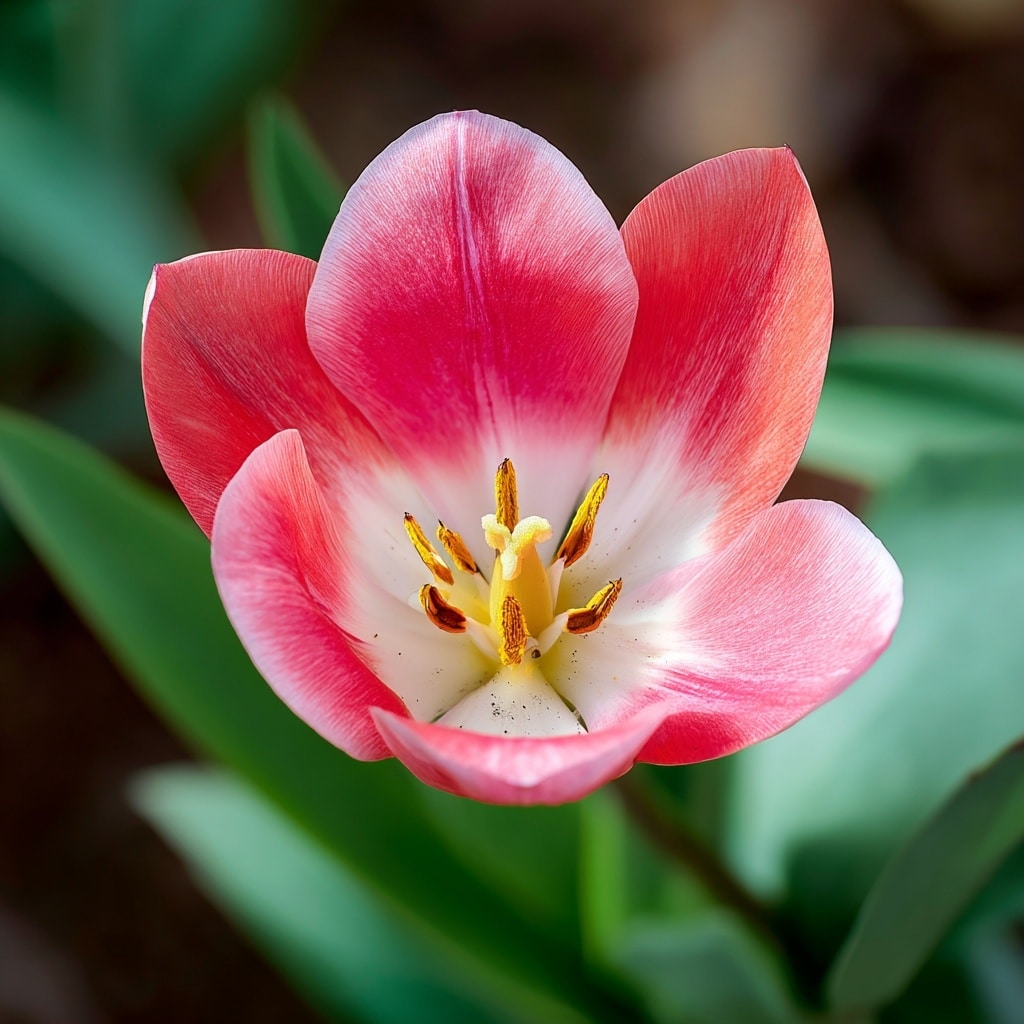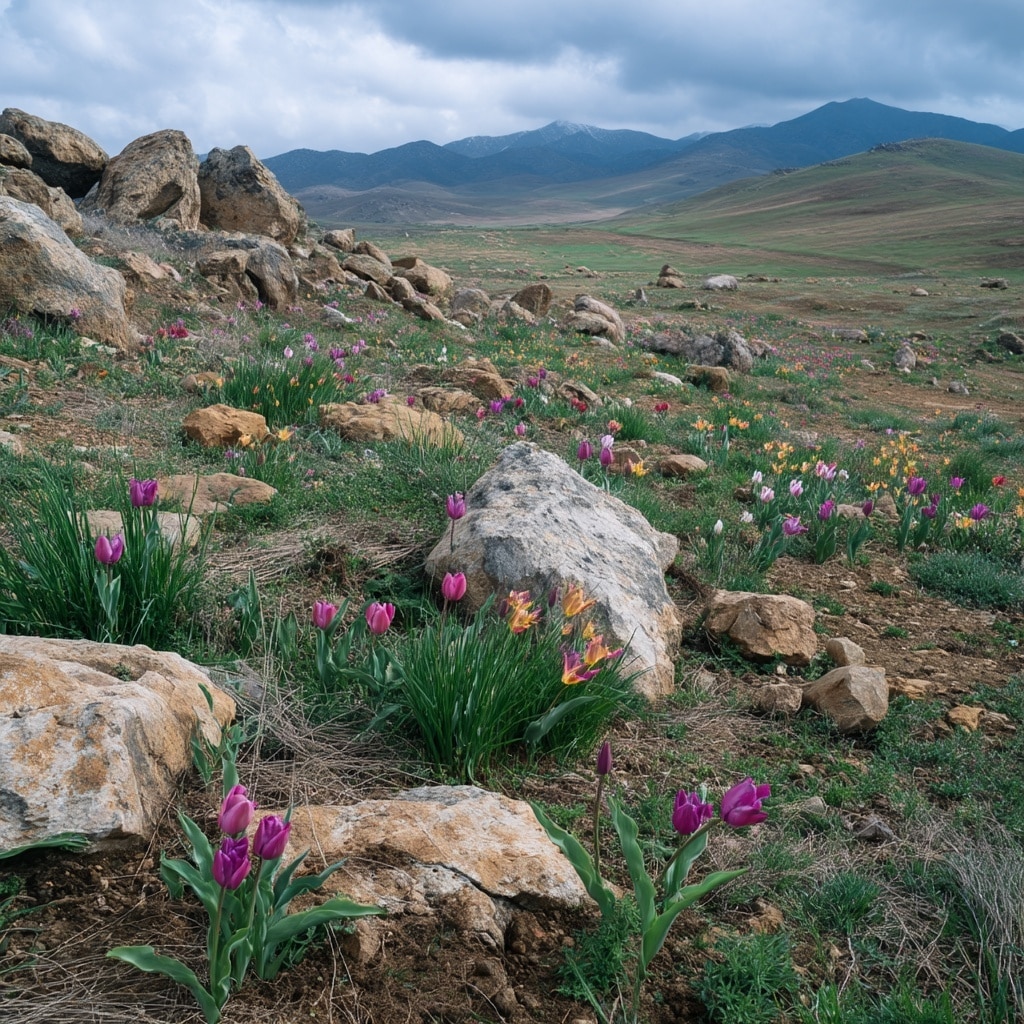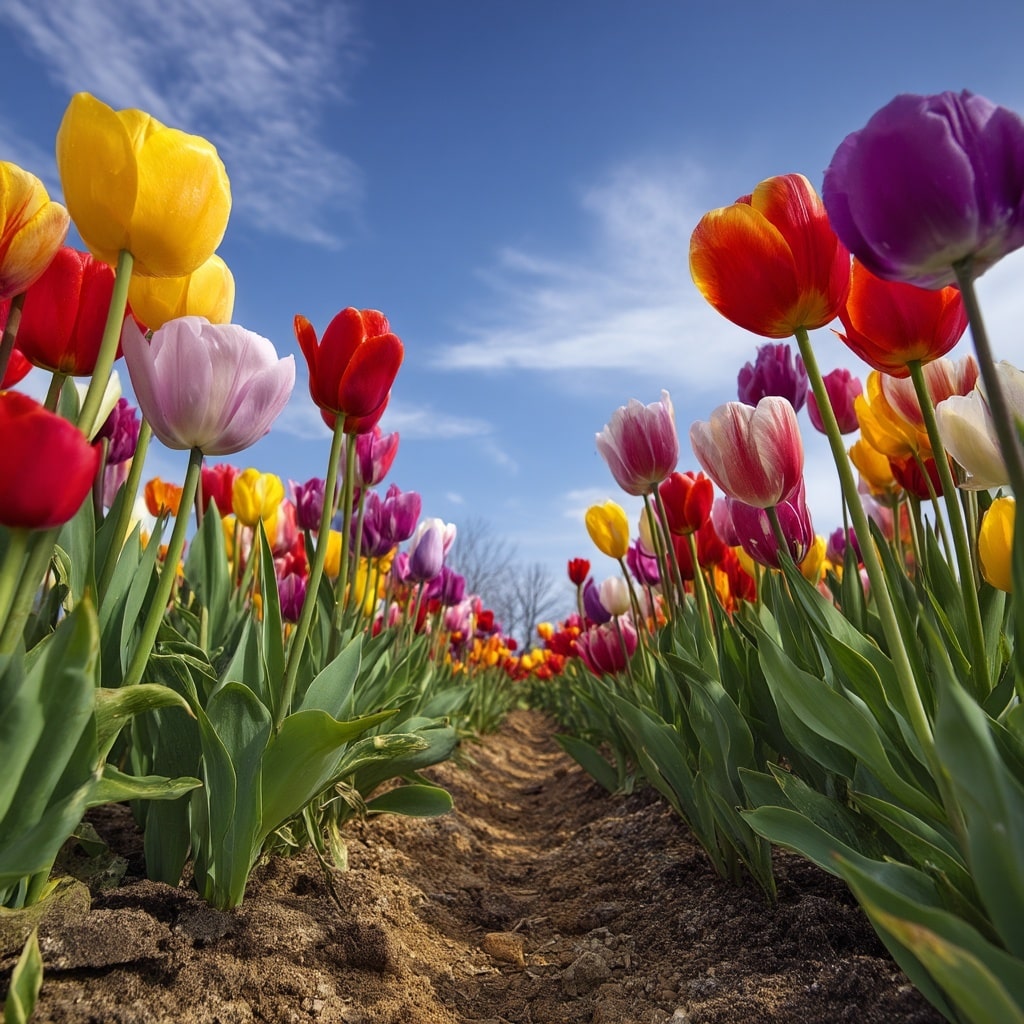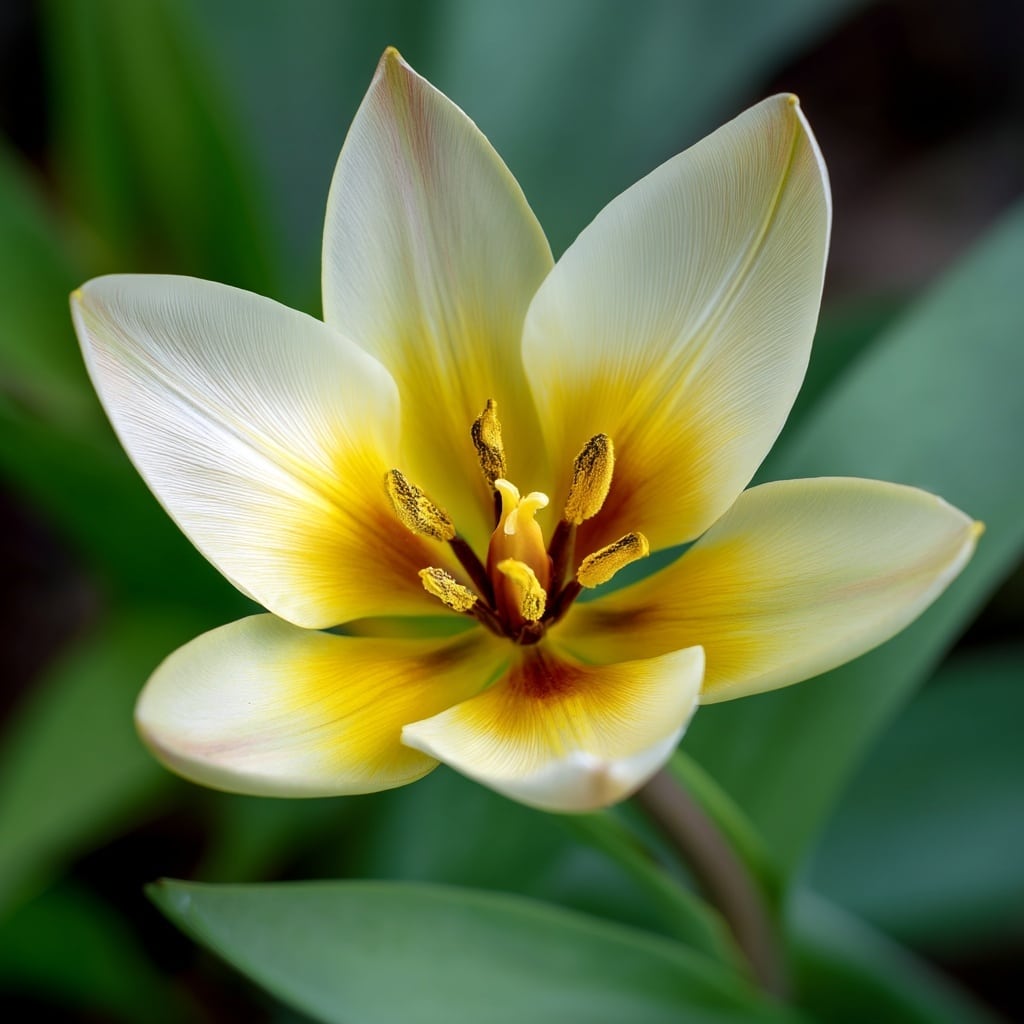Tulip is one of the most beloved spring flowers, known for its bold colors, elegant shape, and rich cultural history. Originating from Central Asia and later cultivated in the Ottoman Empire, the tulip has bloomed its way into gardens across the world. With over 100 species and thousands of cultivars, tulips offer unmatched diversity in form and color. Whether you’re growing them in borders, containers, or floral displays, understanding what makes a tulip unique is key to planting a garden that bursts into life each spring.
Table of Contents
History of the Tulip
The tulip has a fascinating past that stretches back over a thousand years. It’s believed that tulip cultivation began in 10th-century Persia (modern-day Iran), where these vibrant flowers were admired in royal gardens. Their popularity soon spread across the Islamic world, eventually becoming a prominent symbol of the Ottoman Empire.
Tulips made their first appearance in Europe during the mid-1500s, introduced by Augier Ghislain de Busbecq, a Viennese ambassador who encountered them in Turkey. He sent tulip seeds back to Austria, and from there, their popularity quickly bloomed.
A major turning point in tulip history occurred when Carolus Clusius, a French botanist, began cultivating them in the Netherlands during the 1590s. He established a botanical garden at the University of Leiden, and it was here that tulips gained widespread attention. Some of his rarest tulip varieties were even stolen, sparking a booming trade that laid the foundation for the Dutch tulip industry.
In the 17th century, tulips became the center of one of history’s first financial bubbles: Tulip Mania. During this short but intense period, prices for rare tulip bulbs skyrocketed, with some bulbs selling for more than the price of a house. The bubble burst in 1637, but by then, tulips had secured their place as a floral icon in Europe.
Physical Description of the Tulip

A tulip is a bulbous perennial that grows from an underground storage bulb, which allows it to survive harsh winters and re-emerge each spring. As the weather warms, the plant produces a short, upright stem surrounded by two to six bluish-green leaves that cluster at the base.
The true star of the tulip is its flower. Most tulips produce a single, cup-shaped bloom on each stem. The flowers are made up of six petal-like segments, arranged in a symmetrical pattern, along with six stamens that surround a three-lobed stigma. Tulip blooms are typically solitary, though some varieties may bear multiple flowers on one stem.
Tulips are celebrated for their incredible color variety. You’ll find them in nearly every shade except true blue—from soft whites and yellows to vivid reds, purples, and even near-black. Blooms with a single hue are often called “self-colored,” while streaked or striped varieties are known as “broken tulips.” These streaks are caused by a harmless virus that disrupts pigment patterns, creating dramatic flame-like effects.
Major Species and Types of Tulip

The tulip genus (Tulipa) includes around 100 wild species, but most garden varieties come from hybrids and cultivars bred for size, shape, and bloom time. With nearly 4,000 horticultural varieties, gardeners have a wide range of options to suit any design or climate.
🌱 Common Types by Bloom Time:
- Early Bloomers
These tulips appear as early as late March or early April. Common types include:- Single Early Tulips: Classic tulip shape and bright colors.
- Double Early Tulips: Peony-like blooms with layered petals.
- Mid-Season Tulips
Typically bloom in April. They’re ideal for bridging the gap between early and late varieties.- Darwin Hybrids: Tall and strong with large, rounded blooms.
- Mendel Tulips: Compact plants with large, upright flowers.
- Late Bloomers
These tulips bloom in late April into May and offer the widest variety of shapes and styles:- Parrot Tulips: Ruffled petals in bold, streaked colors.
- Lily-Flowered Tulips: Elegant, narrow blooms with pointed petals.
- Double Late Tulips: Also called peony tulips; dense, rose-like flowers.
- Cottage Tulips: Tall and graceful with classic cup-shaped blooms.
🌷 Notable Wild Species:
- Lady Tulip (T. clusiana)
Slender and bicolored, often red and white. - Albert’s Tulip (T. alberti)
Short and early blooming, native to Central Asia. - Woodland Tulip (T. sylvestris)
Naturalizes well in grassy areas and woodlands.
Many species and wild tulips are also used in breeding programs or grown for collectors. However, due to habitat loss and overharvesting, some species—such as the Albanian tulip (T. albanica) and Gumushanian tulip (T. gumusanica)—are listed as critically endangered.
After blooming, tulips naturally die back, allowing the bulb to store energy for the following year. This life cycle makes them ideal for spring gardens that change with the seasons.
Tulip Cultivation: How to Plant Tulip Bulbs for Spring Blooms

Growing a tulip is straightforward, even for beginner gardeners. These flowers thrive in temperate climates and reward a bit of autumn effort with a burst of color in spring. The most important step in tulip care is proper planting.
🛠️ Planting Tips:
- When to Plant:
Plant tulip bulbs in the fall, ideally 6 to 8 weeks before your first hard frost. This allows time for root development before winter. - How Deep to Plant:
Place bulbs 10 to 20 cm (4 to 8 inches) deep, pointy end up. - Spacing:
Allow about 10 cm (4 inches) between each bulb for airflow and room to grow. - Soil and Drainage:
Tulips prefer well-drained loamy soil, enriched with compost. Avoid soggy or heavy clay soils, which can cause bulb rot. - Sunlight:
Choose a location with full sun to partial shade. At least 6 hours of sunlight daily is ideal.
🌿 Ongoing Care:
- Tulips typically bloom for a few years, but over time, the bulbs may weaken or produce fewer flowers. To maintain healthy blooms:
- Lift and store bulbs after the foliage turns yellow.
- Replant in autumn for consistent annual color.
- Keep watering moderate—only during dry periods—since tulips are fairly drought-tolerant once established.
- Most tulip varieties are naturally resistant to garden pests, making them a low-maintenance choice for seasonal beds.
Conservation Concerns for Wild Tulip Species

While cultivated tulip varieties flourish in gardens around the world, many wild species face an uncertain future. Native to mountainous and steppe regions across Central Asia and parts of the Middle East, wild tulips are adapted to very specific climates and soils. Unfortunately, these habitats are increasingly under threat.
🌍 Key Threats to Wild Tulips:
- Habitat Loss:
Expansion of agriculture, urbanization, and mining are reducing the native ranges of many tulip species. - Overharvesting:
Some wild tulips are collected in large numbers for the ornamental trade, often illegally. - Overgrazing:
In many regions, livestock graze heavily on wild tulip populations, damaging young shoots and bulbs. - Climate Change:
Shifts in temperature and rainfall patterns are disrupting the seasonal cycles tulips depend on.
Several wild tulip species are now listed on the IUCN Red List of Threatened Species, including critically endangered varieties like the Albanian tulip (T. albanica) and Gumushanian tulip (T. gumusanica). Conservation efforts focus on protecting natural habitats and encouraging responsible cultivation practices that reduce pressure on wild populations.
Gardeners can help by supporting native plant programs, avoiding the purchase of wild-collected bulbs, and choosing responsibly sourced tulip varieties from reputable growers.
Conclusion

The tulip is more than just a spring favorite—it’s a flower with deep roots in history, breathtaking diversity, and a resilience that makes it a staple in gardens around the world. From its delicate structure to the vibrant colors and wide range of types, growing tulips can bring beauty and meaning to any outdoor space. Whether you’re planting them for their charm, symbolism, or simplicity, tulips will return each season with reliable blooms—if given the care they need.





